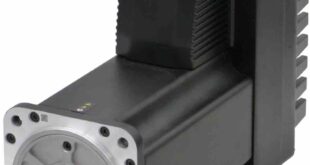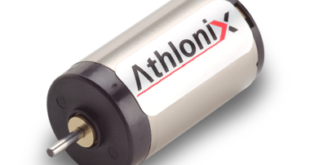ALIO Industries’ Angulares Hybrid Hexapod has a 60-degree tip/tilt travel, the highest angular travel range available among six-degree-of-freedom (6-DOF) positioners on the market.
The Angulares incorporates precision crossed roller bearing guides, optical incremental or absolute encoders on all axes, and offers both linear motor and servo ball screw drives. It features unlimited programmable tool centre point locations, coordinate offsets, and zero backlash across all axes. These advancements enable unlimited XY travel, a Z travel range of 62mm (extendable to 208 mm with other tripod models), 60 degrees of tip/tilt motion (±30 degrees), continuous 360-degree Theta-Z rotation, and XYZ bidirectional repeatability of less than ±0.6 arc-seconds. It also supports velocities up to 100mm/second for both XY and Z axes, with minimum incremental motions of less than 10 nanometres linear and 0.1 arc-seconds angular.
While standard hexapods are adequate for applications requiring micron-level motion tolerances, they fall short for nanometer-level precision. This shortfall arises from inherent performance limitations in conventional hexapods, which operate within three-dimensional space with errors in all six DOF. Traditional performance data typically addresses only one degree of freedom, neglecting errors in other degrees of freedom, particularly in flatness and straightness—critical for nanometer-level precision. Hexapods’ best flatness and straightness still lag by over two orders of magnitude (two decimal points) for basic XY motion.
Hexapods’ precision is influenced by the errors in all six links and joints. They excel in Z-axis movements, where all links perform identical motions at the same relative angles. However, X, Y, pitch, yaw, or roll motions degrade precision and geometric path performance because the links move differently. Errors are more pronounced in conventional hexapods with non-precision joints, bearings, and motion controllers that lack forward and inverse kinematics equations.
The Hybrid Hexapod’s design features a parallel kinematic tripod for Z-plane and tip/tilt motion, integrated with a monolithic serial kinematic stage for XY planar motion. A rotary stage at the tripod’s top or bottom provides continuous 360-degree (Theta-Z) rotation. This hybrid design allows individual axes to be customised for XY travel ranges from millimetres to virtually unlimited distances while maintaining nanometer-level precision. Advanced forward and inverse controller kinematics enable an unlimited number of programmable tool centre point locations, delivering unmatched path precision and performance.
The Angulares Hybrid Hexapod’s 60-degree tip/tilt travel is ideal for applications in aspheric and freeform optical metrology, silicon photonics packaging and probing, laser micromachining on non-planar substrates, wafer metrology, camera module alignment and assembly, sensor/image stabilisation testing, and optical element and fibre alignment.
 Engineer News Network The ultimate online news and information resource for today’s engineer
Engineer News Network The ultimate online news and information resource for today’s engineer






